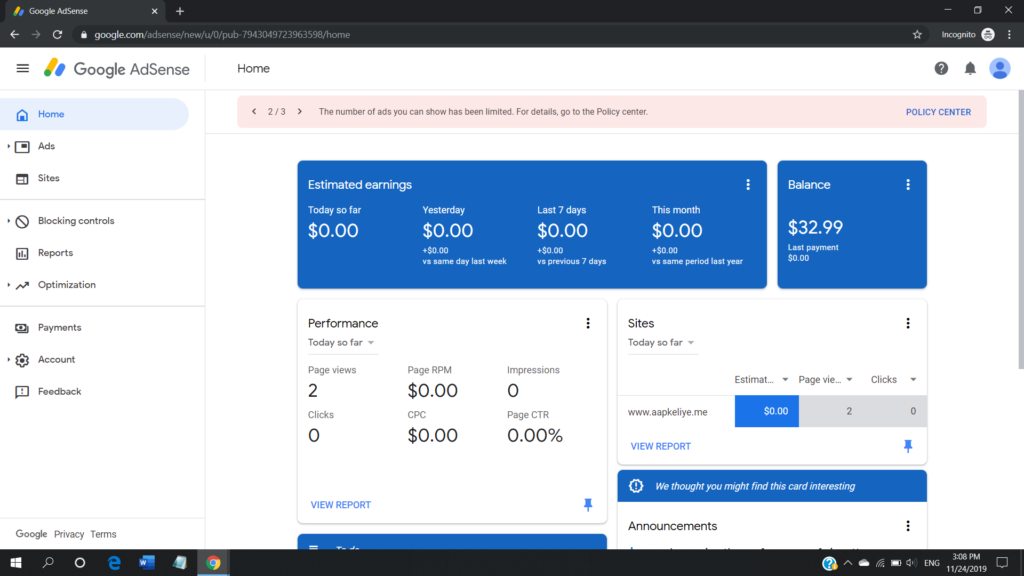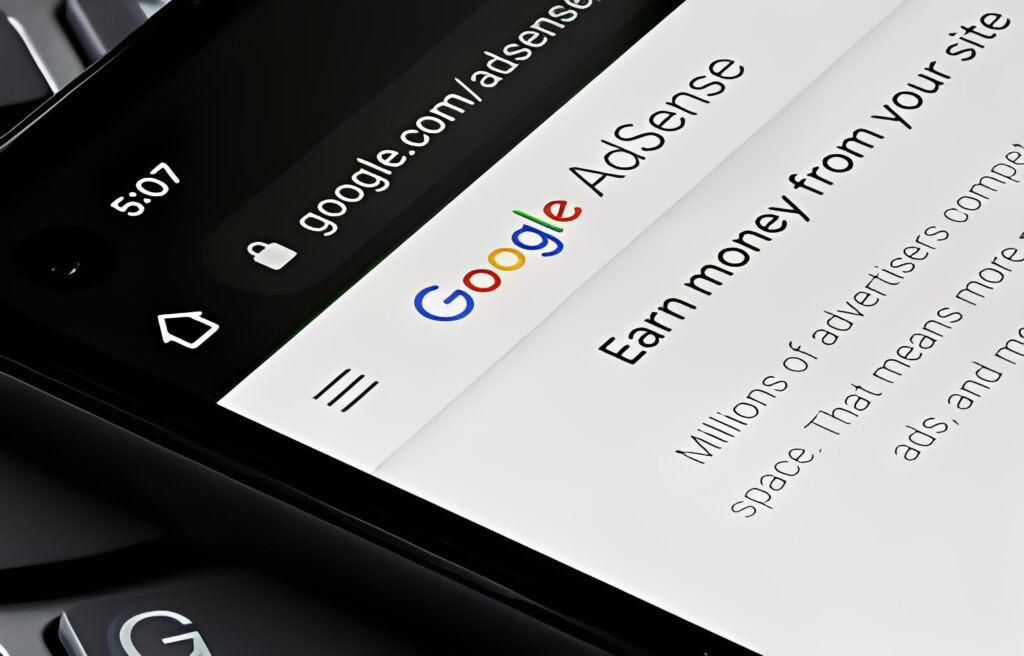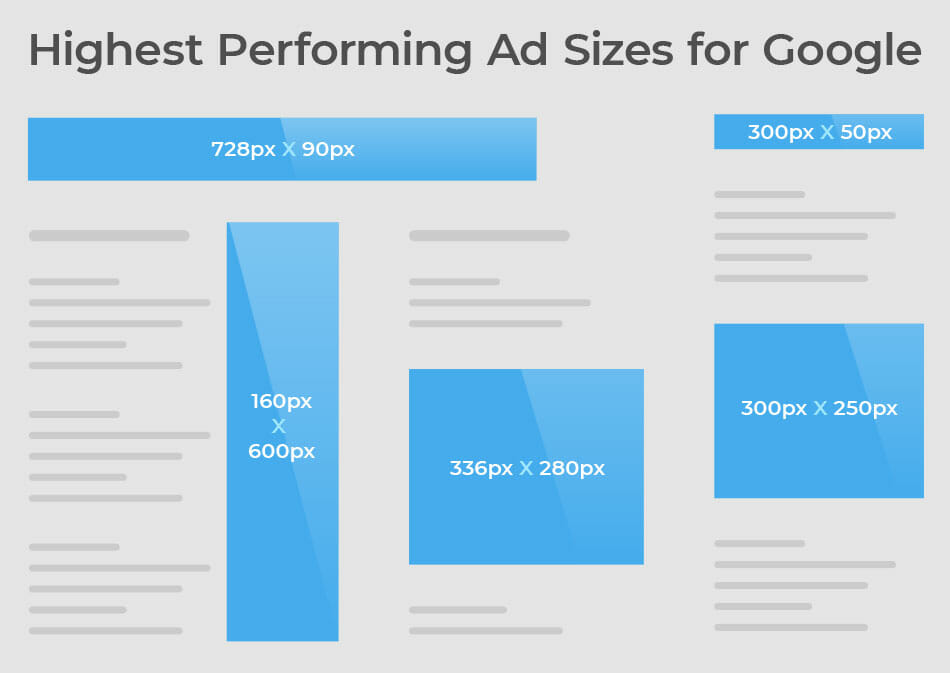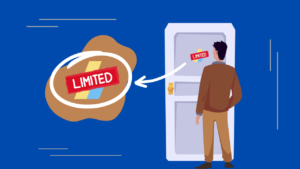I bet you are still wondering what has caused your AdSense account to be limited and what you had done wrong.
Let me tell you that solving AdSense Ad limit is only easy if you know what caused it and where the problem lies.
In this article you will get to know all that is important about AdSense ad serving limit to solve it and prevent it from happening in the future again.
Let’s dive right in and find out what had caused your AdSense ad limit and how you can solve it in a few simple steps.
What is AdSense Ad serving limit and When is it imposed?
Ad serving limit in Google AdSense is a restriction that is imposed on the number of ads that can be shown to a user on a website or app that is enrolled in the AdSense program.
This limit is designed to prevent users from being overwhelmed with too many ads, as well as to prevent fraud and abuse.

AdSense Ad serving limits are typically imposed to ensure that users are not bombarded with too many ads (which negatively impacts user experience), and to ensure that advertisers are getting a fair return on their investment.
In general, the limits are imposed based on the traffic and engagement of the website, and can be adjusted according to the performance of the ads and the user’s experience.
You may receive one of these notifications when you face AdSense ad serving limit:
- Ad serving is currently limited (Account level)
- Disabled ad serving (Site level)
- Restricted demand (Site level)
The most common situation is when Google says that they have found “invalid traffic concerns in your AdSense account“. This may be due to traffic source from social media, low quality link exchanges, post comments, online forums, bought traffic or more.
Why does Google limit ad serving?
As you know, Google AdSense plays a significant role in online advertising by providing a platform for advertisers to reach their target audience.
However, it is important for the ads to be relevant and useful for users, and for the platform to be protected from fraud and abuse. This is why Google has implemented limitations on ad serving.
By limiting the number of ads that can be served to users, Google is able to ensure that the ads are of high quality and that they do not negatively impact the user experience by overloading them with ads or by showing irrelevant ads.
Additionally, according to Google, these limitations help Google to comply with legal and regulatory requirements, and to prevent the spread of misinformation or harmful content on their platform.
Another benefit of ad serving limitations imposed by Google is that it prevents advertisers from over-exposure, and overspending on ad impressions. This way, it ensures that the advertisers are getting the most out of their advertising investments and budget.
By limiting the ad impressions, the ad spend is used more efficiently, and the return on investment is maximised.
This ensures that advertising on Google’s platform remains cost-effective and viable for businesses of all sizes. And the users are not inundated with irrelevant or repetitive ads, providing them a better browsing experience.
How much time does it take to get rid of the ad serving limits on AdSense?
The duration to remove ad serving restrictions on AdSense is contingent upon the root cause of the limits and the actions taken to rectify them.
Most people don’t know what to do after their website receives an ad limit and they wait for it to get back up working normally again by itself.
It is true that you can’t do much if you received an ad limit but it’s also a possibility that the problem is solvable by you with a little research and modification as in many other cases.
In many of those instances, the ad serving limits can be resolved expeditiously by making small adjustments to the ad configuration, such as distributing ad units evenly across the website to distribute impressions among ad units more uniformly.
On the other hand, it may take longer to fix ad serving limits if extensive changes to the ad setup are required or if the website is experiencing a high traffic volume. Getting rid of ad serving limits on AdSense can be a time-consuming process depending on these specific circumstances.
To remove these limits, advertisers need to work with Google to demonstrate that their website or app is in compliance with AdSense policies and that the ads are providing a positive user experience. This process typically involves submitting an application and providing documentation and examples of the website or app in question.
Depending on the complexity of the application and the number of issues that need to be addressed, it can take anywhere from a few days to several weeks for the limits to be removed.
And off-course, for those who aren’t in a hurry to remove the ad limits- they can rest back and wait until Google analyses the website again and removes the ad limits by itself if it founds it free of any fault, which can take 2-4 weeks in general.
What to do if your AdSense ads serving is limited?

If you’re experiencing ad serving limits, there are several steps you can take to resolve the issue and get your ads back up and running. These are the 5 AdSense ad limit solution that can work for you:
1. Understand the cause of the ad serving limits
The first step in resolving ad serving limits is to understand why they’re happening. AdSense has several different types of ad serving limits, including limits on the number of ads that can be displayed on a page, the frequency at which ads can be shown to a user, and the number of ad clicks that can be generated from a single page.
Each of these limits has its own set of rules and guidelines, and it’s important to understand which limit you’re running up against in order to take the appropriate steps to resolve the issue.
2. Check your ad setup
Once you understand the cause of the ad serving limits, the next step is to check your ad setup. AdSense has several different types of ad units, including text ads, display ads, and link units. Each of these ad units has its own set of rules and guidelines, and it’s important to make sure that you’re using the right ad units for your website or app.
3. Spread your ad units evenly
Another important step in resolving ad serving limits is to spread your ad units evenly across all pages on your site. This helps to distribute ad impressions more evenly among your ad units, which can help to reduce the risk of running up against ad serving limits.
4. Monitor your ad performance
Finally, it’s important to monitor your ad performance to ensure that you’re not running up against ad serving limits. AdSense provides a range of tools and reports that allow you to track your ad performance, including data on ad impressions, ad clicks, and ad revenue.
You can monitor your ad performances by using AdSense’s reports, analysing your AdSense data, checking for invalid clicks or by using AdSense’s ad review center.
5. Finally, Reach out to AdSense support
If you’ve tried all of these steps and you’re still running up against ad serving limits, you may need to reach out to AdSense support for help. Google AdSense support team is available to help you troubleshoot the issue and provide guidance on resolving the ad serving limits.
By following these steps, you can resolve ad serving limits and get your ads back up and running on your website or app.
Remember that AdSense policies are constantly updated so it is important to stay updated with the policies and make sure your website or app is in compliance. And for that keep an eye on InsideAdSense.com blogs and updates.
Here’s how to Prevent AdSense ad serving limit and never get it

- AdSense ad serving limit is a restriction that can be imposed on your account if you exceed the number of ad impressions that are allowed for a given period of time.
- Exceeding the limit can result in your ads being paused, which can greatly impact your revenue and your website’s performance.
Here are some tips to help you prevent AdSense ad serving limit:
1. Monitor your ad impressions
One of the most important things you can do to prevent AdSense ad serving limit is to keep track of your ad impressions. You can do this by regularly checking your AdSense account, where you can view your ad impressions, clicks, and earnings. This will help you stay within the ad serving limit and avoid any potential issues.
2. Optimise your ad placement
Ad placement is crucial in ensuring that your ads are seen by the right audience. Make sure that your ads are placed in the most visible and appropriate locations on your website.
It is best to place them above the fold, in the middle of the content or in the sidebar. You can also use heatmap tools to understand where your visitors are spending most of their time and place your ad accordingly.
Optimising ad placement can also help increase the chances of people clicking on your ads and reduce the number of ad impressions required to generate revenue.
3. Use ad formats that are less likely to be blocked
AdSense offers different ad formats, such as text and display ads. Text ads are less likely to be blocked by visitors, so they can help reduce the number of ad impressions required to generate revenue.
Try to use ad formats that are less intrusive, such as in-article ads, and avoid formats that can be easily blocked by ad-blockers.
4. Limit the number of ads per page
It is important to limit the number of ads per page to ensure that your website does not appear cluttered or overwhelming. This will also help reduce the number of ad impressions required to generate revenue.
Google recommends a maximum of three ad units per page, and one link unit per page.
5. Use ad filters
AdSense provides ad filters that allow you to block certain types of ads from appearing on your website. This can help reduce the number of ad impressions required to generate revenue. For example, you can block ads from specific advertisers or block ads that are not relevant to your website’s content.
6. Use AdSense Auto ads
AdSense auto ads automatically place ads on your website in the most appropriate locations, which can help increase the chances of people clicking on your ads and hence reduce the number of ad impressions required to generate revenue as well.
Auto ads also optimise the ad formats and sizes, so you don’t have to worry about choosing the perfect ad format.
7. Regularly update your website
Keep your website updated with fresh content, this will help reduce bounce rate and increase the chances of visitors interacting with your ads. This also helps to improve your search engine ranking, which can lead to more organic traffic and ultimately increase the chances of people clicking on your ads.
8. Block bad traffic to your website
To prevent AdSense ad serving limit, it is important to identify and address any bad traffic patterns on your website. One way to do this is by using an ad server like Google Ad Manager to adjust the traffic.
However, for those using “tags on page” method, additional server logic can be added to the tags to serve the page without ads to suspect segments of audience.
Another alternative is to block the suspect traffic completely, this can be done by adding access rules to your htaccess file or using a firewall.

By following these tips, you can help prevent AdSense ad serving limit and ensure that your ads are always running and generating revenue for your website.
Popular: How to Get AdSense approval without writing blog posts?
FAQs & what NOT to DO with Google AdSense ad serving limits
1. Does social media traffic cause AdSense ad limit?
There is lot of debate online whether social media is an ideal source for website traffic or not, and fair enough for all the people against social media generated traffic to tag it as one of the major reasons for imposed ad limit on AdSense account. However this view is completely or we can say partially untrue.
It’s no big knowledge that social media traffic can potentially cause AdSense ad limits, but it depends on how the traffic is directed to the website or app that is enrolled in the AdSense program.
If a website or app receives a sudden spike in traffic from social media, it could trigger AdSense’s ad serving limits. This is because AdSense uses a variety of factors to determine how many ads to serve to a user, and a sudden spike in traffic can be interpreted as a potential sign of fraud or abuse.
However, if the traffic is consistent and comes from legitimate sources, then it should not cause ad serving limits to be imposed. Additionally, if the site owner or publisher is aware of the traffic spike and can provide evidence that it’s coming from legitimate sources, they can contact Google Adsense team to increase the limit.
Moreover, Google has itself stated that “Organic Social Media is a good way to grow your website traffic”.
“Organic Social Media is a good way to grow your website traffic”
2. Should I delete all ad units and recreate them if I face an ad limit?
Many websites and bloggers advice on deleting all ad units & recreating them for a quick fix. However we don’t support this view because deleting all your ad units and recreating them may not be necessary to resolve ad serving limits.
It is best to check and understand the cause of the ad serving limits first and then take appropriate steps to resolve the issue. In some cases, simple changes to your ad setup, such as spreading your ad units evenly across all pages on your site to distribute impressions more evenly among your ad units, can resolve ad serving limits.
We only recommend deleting all ad units if you have found that your ad units are not placed correctly on your website or app, or if they are not properly sized, then recreating them with the correct placement and size may be the best solution.
Additionally, if you have found that your ad units are not in compliance with AdSense policies, recreating them with the appropriate settings can be a solution.
3. Should I take help from a third party or someone offering a quick fix?
It depends on the person who is offering to fix the problem and their qualifications. If the person is an experienced and reputable AdSense expert, they may be able to help you resolve ad serving limits and improve your ad performance.
However, it is important to be cautious when working with third-party individuals or companies and make sure they are authorised AdSense partners or have a verified profile.
It is also important to consider the cost and the services offered, and to make sure that they fully understand and comply with AdSense policies.
Some unscrupulous individuals may offer to fix ad serving limits by providing invalid clicks, which is a violation of AdSense policies, and can lead to permanent termination of the AdSense account.
It is recommended that you do your own research and due diligence before engaging with any third-party individuals or companies. You can check their credentials, reputation and read reviews or testimonials from their previous clients.
If you still have doubts, you can reach out to AdSense support and ask them for their opinion on the person or company you are considering working with.
4. Should I buy or keep buying paid website traffic?
There isn’t any one word answer to this question. In general, buying paid traffic can help increase the number of visitors to your site, which can help boost your ad revenue and increase the visibility of your brand.
However, it’s important to note that not all paid traffic is created equal. Some sources of paid traffic may be more legitimate than others, and some may be more likely to convert into paying customers or leads.
Buying paid traffic can be a good strategy to increase your website traffic, but it’s important to be careful and only buy traffic from reputable sources. It’s also important to monitor the performance of the paid traffic to ensure that it’s providing a positive return on investment.
Overall, buying website traffic can be a good strategy to increase your website’s visibility and potentially boost your revenue, but it’s important to do your research and ensure that you’re getting high-quality traffic from reputable sources.
5. Do Auto ads help prevent AdSense ad serving limit compared to manual ads?
It is most likely true that auto ads help prevent ad limit compared to manual ads because auto ads let’s google’s AI do the automatic optimisation of ads on your website, it also places ads in smart ad formats and sizes, are less intrusive and overall have a reduced human error chances over manual ads.
However there is no official confirmation from Google’s end about this topic as far we know, but according to our research auto ads certainly have an edge over manual ad formats.
Comment down if you have any questions regarding your Adsense ad service limit and we will be happy to entertain your questions.
Recommended Reads: 10 Common SEO Mistakes that are Ruining your Website Rankings


Hola, quería saber tu precio..
Hello, please tell us what price you wanna know? And we prefer english as a medium of coversation.